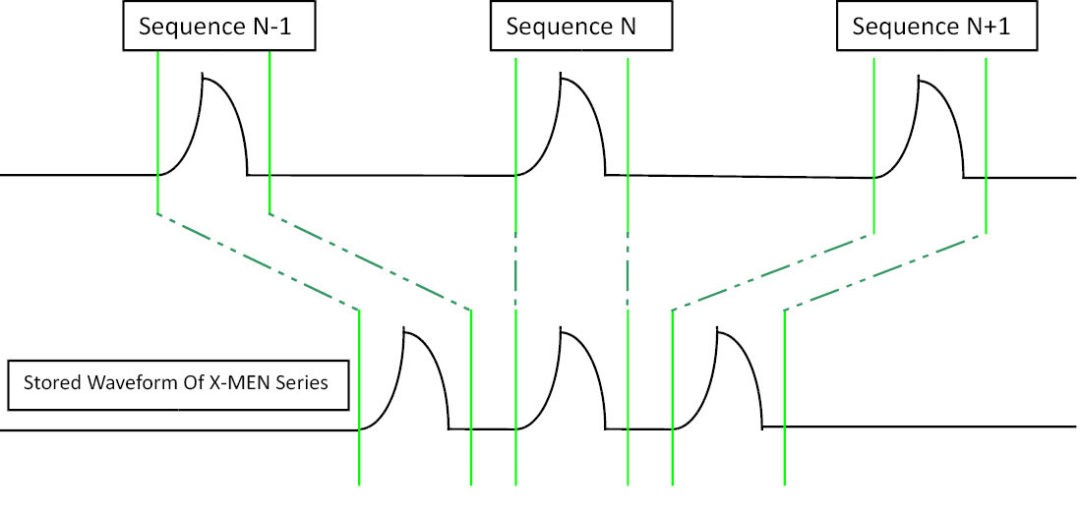
·History mode
The history mode is a background permanent history waveform recording mode that can be started with one key. A maximum of 80,000 frames can be recorded. The history waveforms can be taken out from the buffer at any time and can be analyzed frame by frame coordinated with the waveform navigation function. It provides the time triggered for each frame by a time list, so that we can calculate the interval time between adjacent frames, and the subtle changes in the signal.
Examples of sequence and history mode
1. Capturing fast-changing signals can make up for insufficient real-time waveform capture rates. With the rapid development of electronic technology, the waveform capture rate of digital oscilloscopes has been steadily improving. But we should understand that all the maximum waveform capture rates attained by manufacturers cannot satisfy certain circumstances such as: opening interpolation, mathematical operation, measurement and so on. Even more, the time base setting must be adjusted to a slower sweep speed, because the real-time waveform capture rate will be lower with a higher sweep speed. In anera of commercial hype, we should beware of false publicity by manufacturers and verify their claims by using the principle “practice is the sole criteria for testing truth.”We must also choose a suitable measuring method under different conditions to find the best oscilloscope for our application.
The sequence mode of X-series digital oscilloscope can effectively improve the real-time waveform capture rate. By using the same time base setting, compared to real-time mode, the equivalent waveform capture rate under sequence mode is increased substantially.
Next, here’s an example of a Siglent SDS1000X series to oscilloscope:
As shown in figure 6, we will use the SDG2000X to simulate a five successive equal interval of 4us pulse signal, with its rising of 10ns, pulse width of 80ns,trigger source is set to manual:
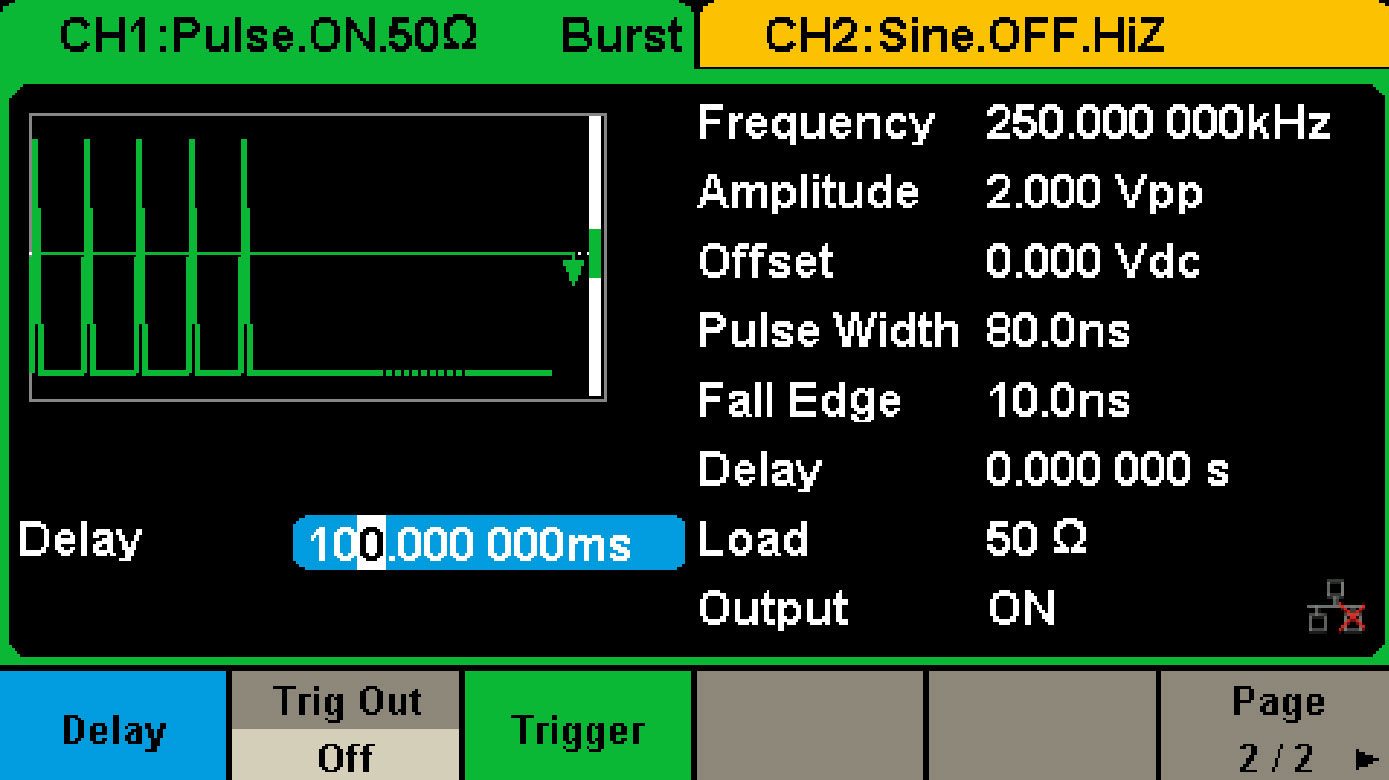
In theory, to capture all of the five pulses, the waveform capture rate should be at least 250,000 wfms/s. Combined with measurement function, the result is shown below with its rise time(Rise) and pulse width(+Wid) displayed on the screen:
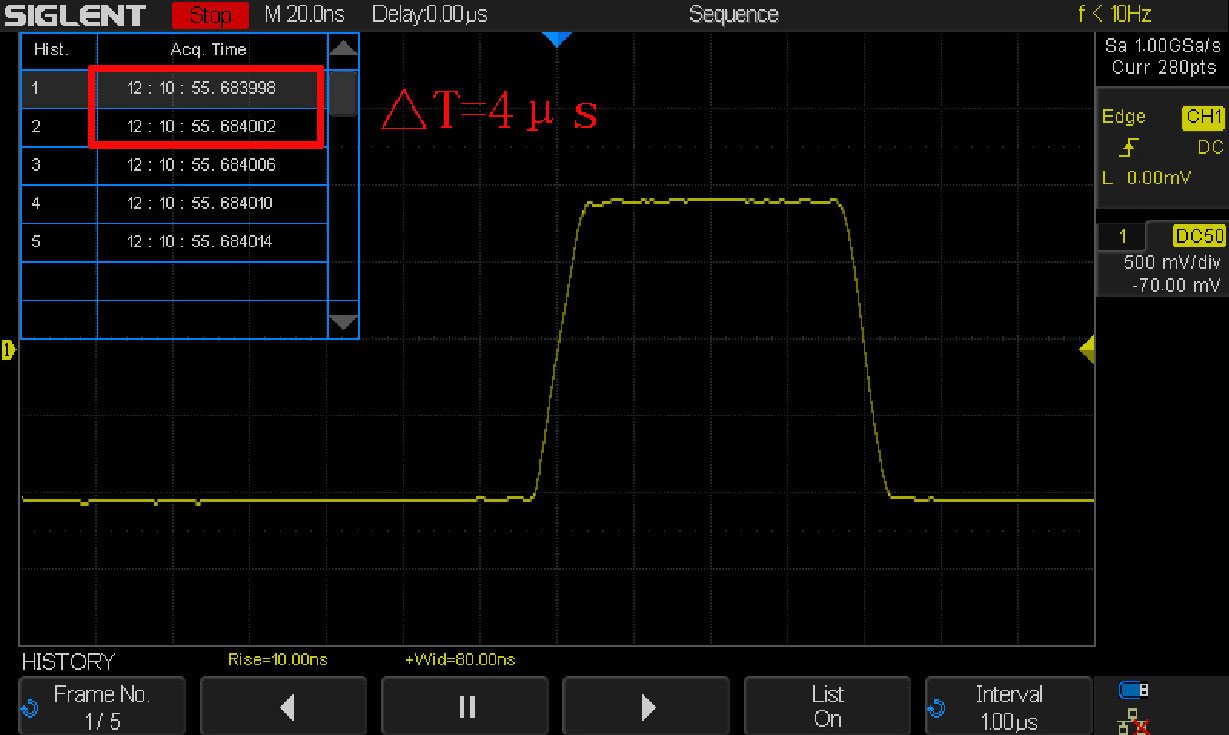
We tried to capture all of the five pulses at one time in real-time mode, but unfortunately, only one pulse can be acquired on the screen shown in the figure 8:
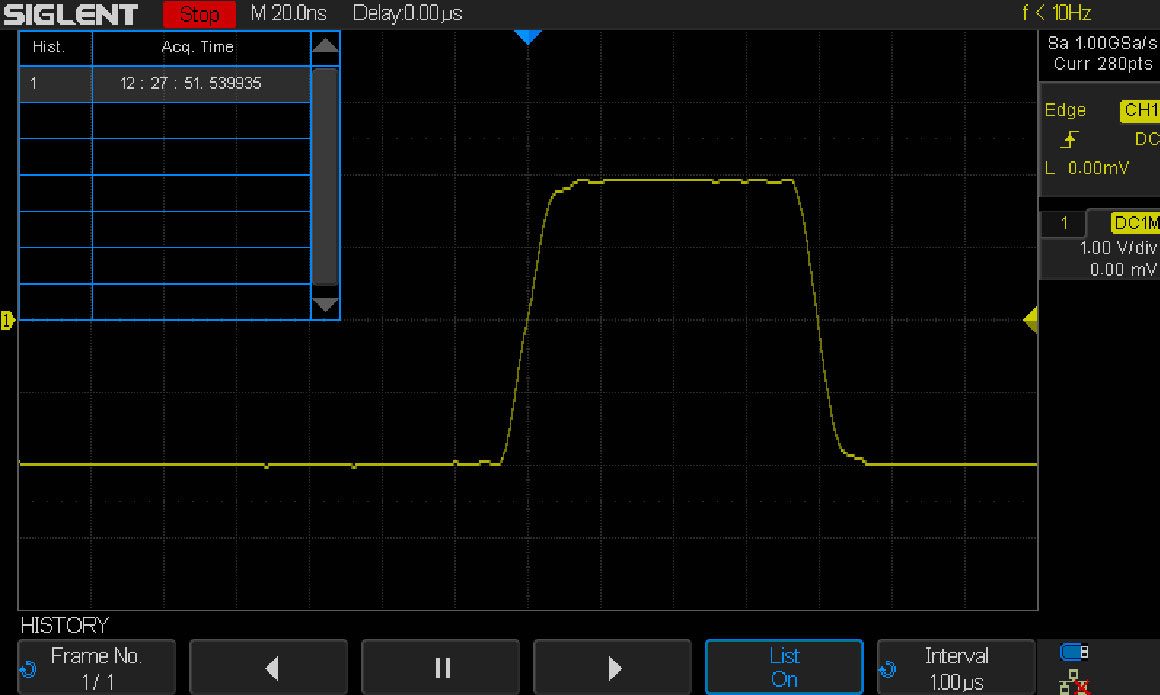
According to the number of the pulses acquired in the above two modes, we can draw the following conclusions: in sequence mode, 20ns time base setting, the equivalent waveform capture rate can reach at least 250,000 wfms/s even if the measurement function is on. However, in real-time mode, since only one pulse can be acquired, the dead time occupied at least 4 * 4μs and in theory it’s waveform capture rate should be less than 62,500 wfms/s (The maximum waveform capture rate of the SDS1000X is 60,000 wfms/s), and therefore, compared to the real-time mode, the equivalent waveform capture rate of sequence mode is increased at least 4 times.
For acquisition and analysis of fast signals, sequence mode can make up for insufficient real-time waveform capture rate, and is a great solution for people to explore.
Acquisition of long-interval pulses and accidental signals:
As mentioned in Challenges to the traditional testing methods, Sequence mode can effectively solve such problems. For example with a 60s interval signal, the acquired waveform as shown in figure 9:
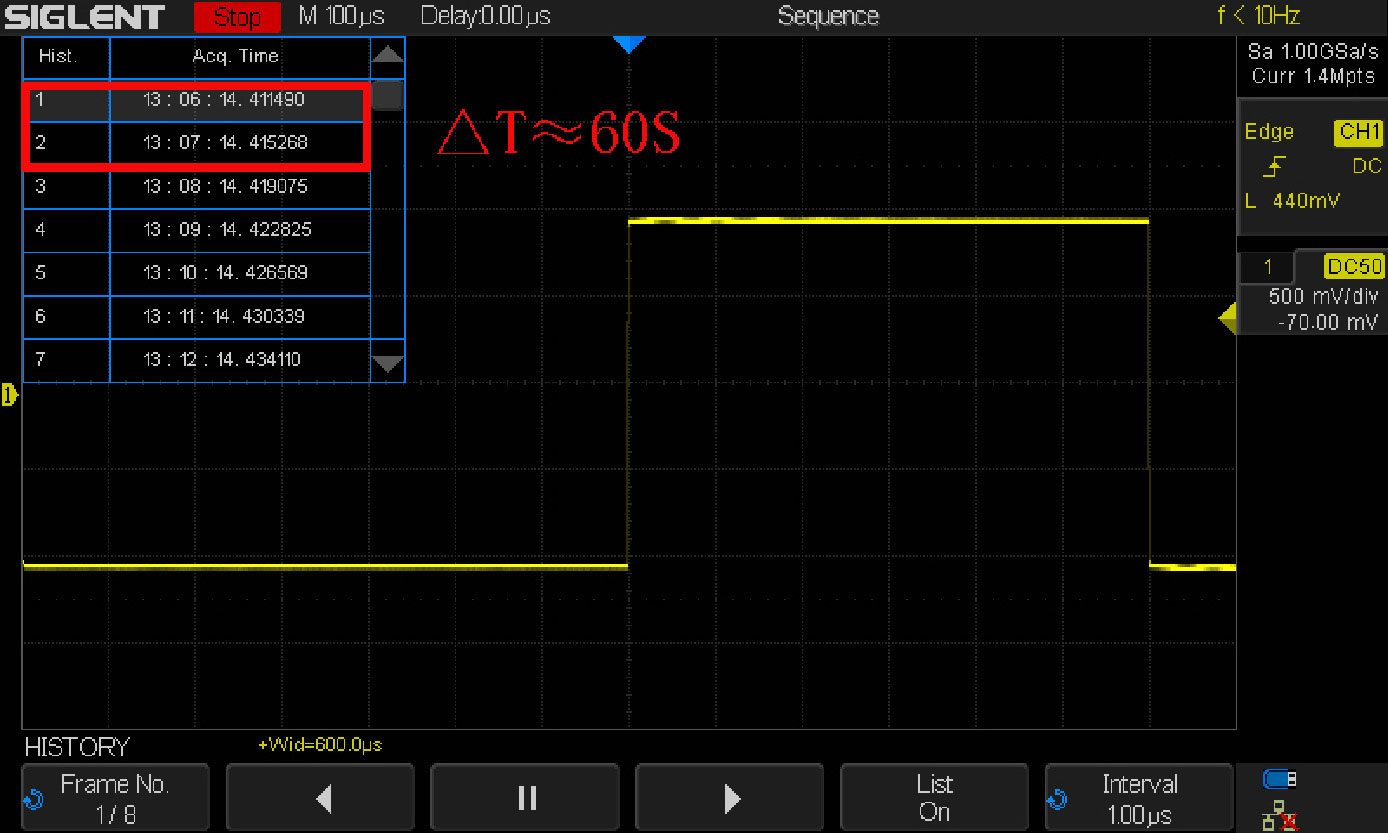
Find abnormal events in signals
In order to satisfy users’ demands for high performance, highly scalable electronic products, the design of modern electronic products becomes increasingly complex and so does the debugging system. It becomes more and more important to be able to search for abnormal events and separate them from normal events.
As shown in figure 10, here is a PWM signal displayed on the screen of SDS1000X. By using the color temperature display, we can find that there is some noise in the PWM signal. How can we know the duration time and regularity of the abnormal signal? This is the case we will analyze next.
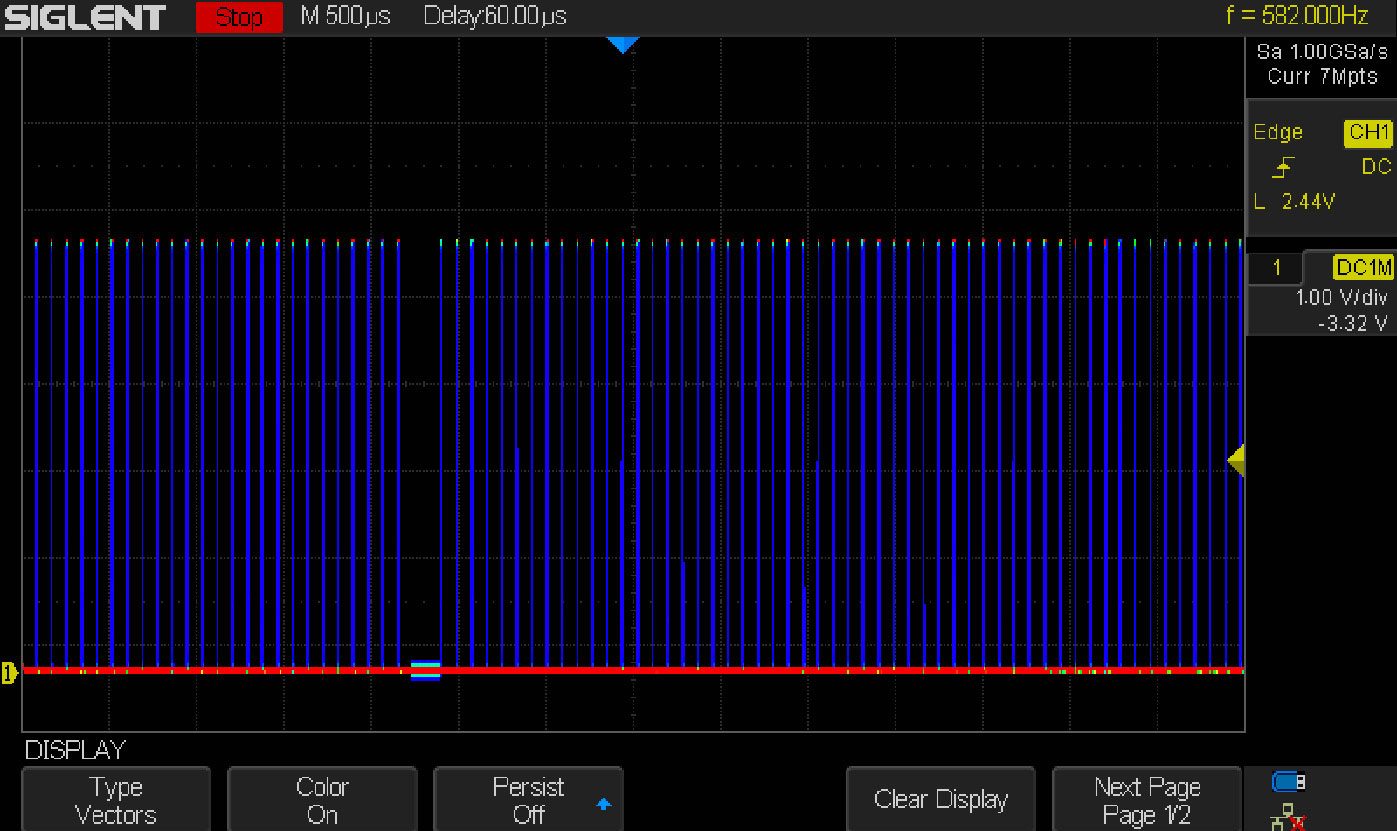
First,we will use a negative pulse trigger to isolate the event of interest. Then we can capture a certain number of signal segments for analysis of samples using sequence mode. There are 100 abnormal frames captured by sequence mode as we see in figure 11.Combined with a dedicated navigation bar to analyze history waveforms frame by frame, we can use the triggered time and interval time between two adjacent frames to helps us locate and analyze the event we are interested in.
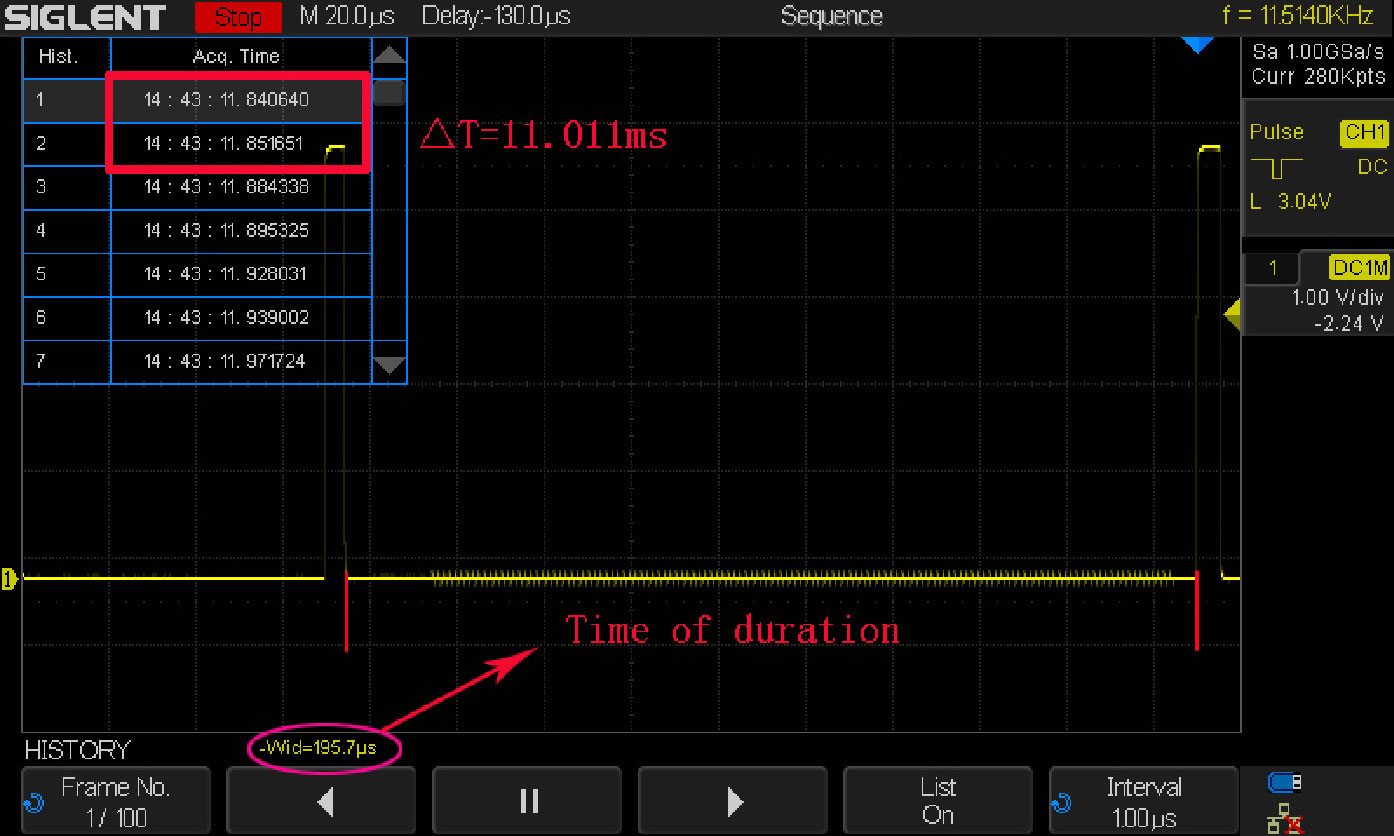
Summary
The sequence mode and history mode are closely related. We can easily find sporadic, intermittent glitches or low duty cycle signals, such as laser pulses and metastable low-duty radar pulses. These two modes enable engineers to capture signals with a high sampling rate and at the same time not lose signal details, and thus improve the testing accuracy and the utilization of memory depth.
Combined with a dedicated navigation bar and history waveform list to analyze the waveform details, the X-series oscilloscope provides comprehensive solutions for the problems discussed above.






